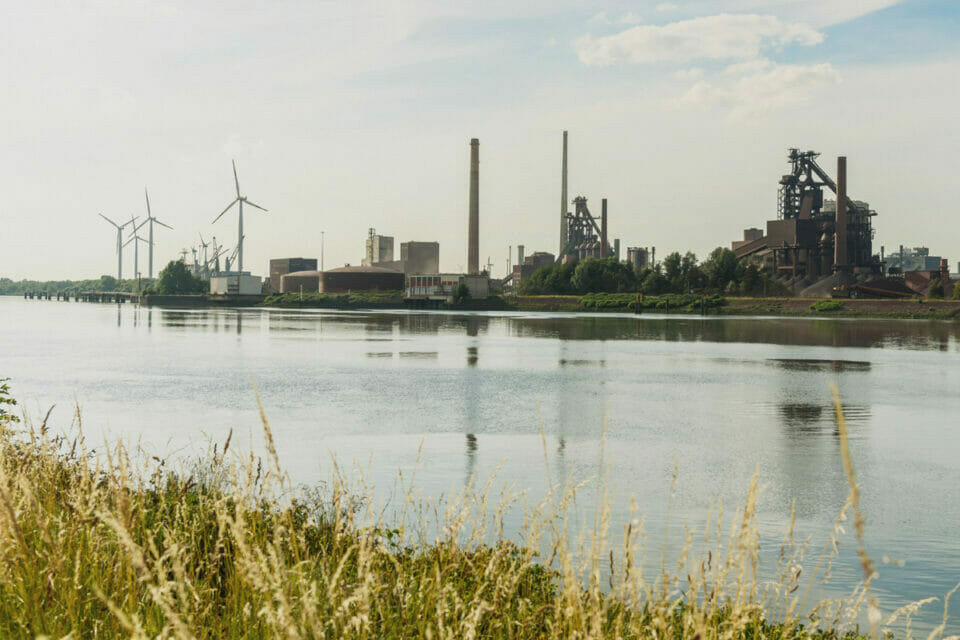Designing the right sustainability program has become critical as companies attempt to balance economic growth and environmental and social responsibility.
However, pursuing sustainability goals carries many risks, including costs incurred at the outset and the challenges of complying with regulations. Conversely, several benefits exist, such as cost savings, improved stakeholder relationships, and increased competitiveness.
Management must weigh the pros and cons, determine which of each they can live with, and design the best sustainability program for their organizations.
This article discusses three of these risks and benefits.
3 Risks of a Sustainability Program
1. Upfront Costs
The upfront expenditures associated with sustainability efforts frequently deter businesses from adopting them. Typical up-front expenses for sustainability include the following:
- Infrastructure improvement. It is expensive to upgrade infrastructure and equipment for sustainable practices. For example, installing solar panels or upgrading to energy-efficient lighting demands high up-front costs.
- Training personnel. Employees must learn to adopt new habits and procedures to use sustainable practices. Creating training programs and educating staff members about the latest methods can be expensive in terms of time and resources.
- Research and development. It may be necessary to conduct substantial research and development, which can be costly, to create sustainable products or processes.
2. Regulatory Compliance
As numerous laws and regulations are in place to ensure sustainable practices and environmental protection, sustainability and risks associated with regulatory compliance are intertwined.
Organizations that violate sustainability standards run the danger of facing legal, financial, and reputational repercussions. Risks related to sustainability regulation compliance include the following:
- Failure to comply with environmental regulations. Many nations have environmental restrictions, requiring businesses to use renewable energy sources, cut back on trash, or minimize carbon emissions. Companies that break these rules might face legal action and penalties.
- Risks to safety and health. Some sustainability regulations, like those concerning hazardous materials or workplace ergonomics, are concerned with safeguarding the health and safety of employees. Infractions of these rules may lead to legal action and injury to employees.
- Disclosure and reporting hazards. Organizations must disclose and report their environmental and social impact in accordance with sustainability laws. Failure to publicly report or disclose this information can lead to reputational damage and legal action.
3. Supply Chain Disruptions
Sustainability and supply chain disruptions are often linked because sustainable practices can help mitigate the risk of those disruptions. Conversely, however, supply chain disruptions can also harm sustainability efforts. Some examples of sustainability supply chain disruptions include the following:
- Transportation disruptions. Delays in delivering sustainable goods or materials can occur. This is due to disorders in transportation, like natural catastrophes or political instability. Increased expenses and reputational harm may result from this.
- Workforce disruptions. Workforce disruptions, such as strikes or illness outbreaks, can affect supply chains and delay the delivery of sustainable goods or resources. These delays may lead to decreased business prospects and higher expenses.
- Infrastructure disruptions. Disruptions in infrastructure can cause delays in delivering sustainable goods or materials. This can include power outages, damage to roads, or damage to ports. These disruptions can affect supply chains, potentially increasing expenses and causing reputational harm.
3 Benefits of a Sustainability Program
The benefits of designing a sustainability program include the following three:
1. Improved Stakeholder Relationships
By displaying a commitment to social and environmental responsibility, sustainability efforts can strengthen stakeholder relationships for firms. Organizations can improve their reputation and gain stakeholder trust by embracing sustainable practices.
Following are a few instances of how sustainability can enhance stakeholder relationships:
- Customers. Organizations can use sustainability programs to attract and retain customers who are increasingly aware of the environmental and social impact of their purchases. Organizations can show their dedication to ethical business conduct by employing sustainable practices, which can increase client loyalty and satisfaction.
- Employees. By fostering a feeling of purpose and supportive workplace culture, sustainability programs can help increase employee engagement and retention. Organizations that commit to social and environmental responsibility can count on more engaged and devoted employees.
- Investors. Organizations can benefit from investors’ increased interest in sustainable investments by implementing sustainability efforts to draw in and keep them. By embracing sustainable practices, organizations can demonstrate their long-term worth and growth potential, which may appeal to investors.
- Communities. Sustainability projects can strengthen community bonds by demonstrating a commitment to ethical business practices and boosting the local economy. As a result, the community may start to trust and support the groups more.
2. Increased Competitiveness
Numerous advantages of sustainability can boost an organization’s and business’ competitiveness. Three important ways that sustainability can enhance competitiveness are listed below:
- Improved reputation. Promoting sustainability programs can enhance a business’s reputation and brand image, which can help it draw in and keep customers. Customers are becoming more aware of environmental and social issues. As a result, they are more likely to support companies that use ethical business methods.
- Innovation. Sustainability may spur innovation and assist businesses in creating new goods and services that satisfy shifting consumer preferences and demands. Sustainable innovation can lead to new ways of generating energy from renewable sources. Additionally, it can also result in eco-friendly products and circular business models.
- Access to capital. Investors are becoming more interested in and willing to invest in businesses that exhibit sustainable practices. Companies may have access to cash that will enable them to develop and become more competitive.
3. Positive Environmental and Social Impacts
Sustainability can also bring about positive environmental and social impacts. Here are two ways that sustainability can benefit the environment and society:
- Environmental benefits. Using sustainable practices can lessen the damaging effects of businesses and organizations on the environment.Lowering greenhouse gas emissions, conserving natural resources, and cutting back on waste can all help reduce pollution and combat climate change. Sustainable practices can also encourage using cleaner industrial techniques and renewable energy sources to reduce the adverse effects on the environment.
- Social benefits. Positive social consequences can also result from sustainability. Businesses and organizations can enhance the well-being of their workers, clients, and communities by implementing sustainable practices.These actions can encourage stakeholder loyalty and trust. Providing safe and healthy working conditions is an example, as is advocating fair labor standards. Additionally, aiding local communities shows that a company values its stakeholders. Sustainable business practices can address societal problems, including poverty, inequality, and access to necessities like food and water.
Understanding the Risks and Benefits of a Sustainability Program is Critical
Sustainability can be a complex puzzle, complete with hurdles and pitfalls, but also the potential for positive outcomes. Businesses can reduce risks and gain advantages by taking a long-term, strategic approach to sustainability, creating a more sustainable future for their operations and the local communities.
However, designing successful sustainability initiatives requires the industry’s premier solutions. Allow our team of experts to tailor a plan that helps your organization meet stakeholder expectations.
Contact us today to learn more.





